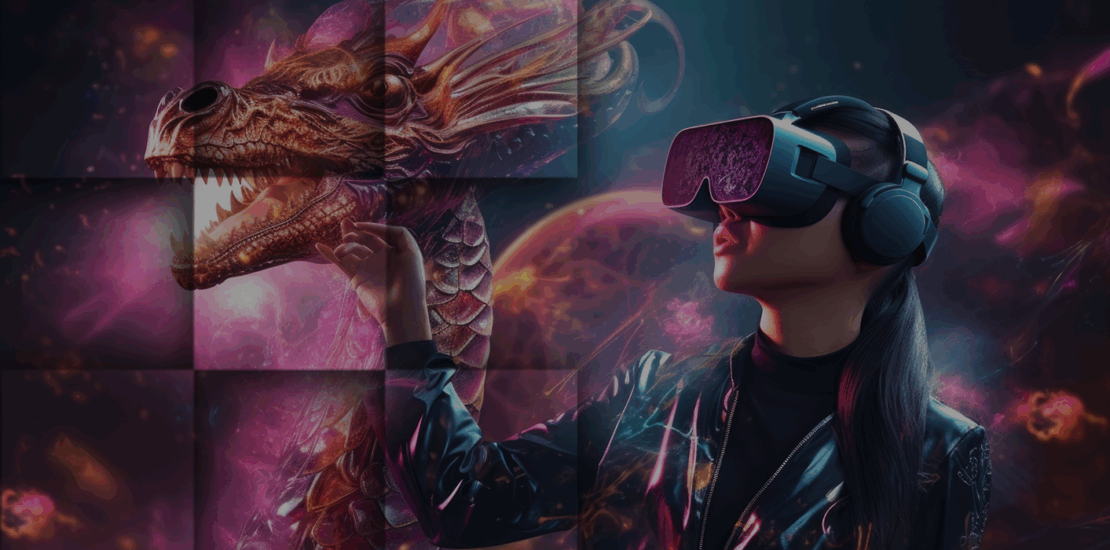AI Isn’t Just for NPCs: How Generative AI Is Reshaping Game Development Pipelines in 2025
- September 11, 2025
- Posted by: iXie
- Category: Game Development

In 2025, the average AAA studio will create more than half of its in-game assets with generative AI tools, a change as seismic as the jump from 2D to 3D. This isn’t speculation. It is a reality playing out in production pipelines across the globe. Generative AI has moved beyond the tech demo stage and is now an essential force in modern game development.
The shift is measurable. Industry surveys show generative AI in game development now touches every stage of production, from concept art to environment design to bug testing. On Steam, nearly one in five new releases this year openly credit AI in their development process.
The result? Games are arriving faster, packed with richer worlds and more personalized experiences, without requiring studios to drastically expand their headcount.
Contents
Beyond NPCs
Generative AI’s early role in gaming was modest: giving NPCs more lifelike chatter. In 2025, that’s entry-level. AI now drives entire game worlds.
Procedural generation has evolved from predictable dungeon layouts to context-aware ecosystems that shift based on player choices, narrative stakes, and even emotional cues. In Fortnite, for example, AI-powered special characters adapt their dialogue and combat styles dynamically.
Other titles show just how far AI in gaming has come. No Man’s Sky continues to refine its procedurally generated universe with AI-assisted updates that make each planet feel more alive. Baldur’s Gate 3 modders are experimenting with adaptive dialogue systems, adding reactive lines based on player actions, creating deeper role-playing immersion.
Narrative systems are benefiting equally. AI-driven story engines now weave branching subplots on the fly, ensuring each player’s journey is distinct, not just in side quests but also in how the core storyline unfolds. This delivers unprecedented replayability, powered by genuinely fresh scenarios.
As AI transforms how worlds and stories evolve, it’s also revolutionizing the very game assets those worlds are built from.

AI-Driven Asset Creation
For decades, asset creation was a bottleneck in game production. Artists could only move so fast, regardless of team size. Generative AI has smashed through that barrier, not by replacing artists but by augmenting them.
Before: Two weeks to create a high-res, fully textured prop.
Now: Two days with AI assistance, including manual polish.
Generative AI tools allow high-resolution, style-consistent assets to be generated in hours rather than weeks. Art directors can lock in visual style guides to ensure every AI-assisted texture, model, or animation aligns with the project’s artistic DNA

Smarter QA with AI
The same AI-powered game pipelines that accelerate asset creation are also revolutionizing QA.
Generative AI can simulate thousands of edge cases, spanning platforms, resolutions, and input methods, before human testers even touch a build. Candy Crush already uses AI to tweak and balance thousands of puzzle levels in real time while running automated stability tests.
AI QA is particularly valuable for cross-platform releases. Whether the target is PC, console, mobile, or VR, AI can adapt test cases to platform-specific quirks and performance thresholds, ensuring consistency and polish across all SKUs.
The goal isn’t to replace testers. It is to free them from repetitive tasks so they can focus on what humans do best: evaluating gameplay feel, creative balance, and accessibility.

Faster, Smoother Co-Development with AI
With distributed teams now common, studios must keep quality consistent across continents and time zones. Generative AI is becoming the ultimate bridge.
From flagging mismatched polygon counts to validating animation timing, AI tools ensure that outsourced and in-house work blend seamlessly. AI-assisted documentation acts as a living knowledge base, translating design intent into precise, executable tasks for every contributor.
Some executives, like Take-Two’s CEO, view AI as a way to shift talent into higher-value creative roles that command better pay.
Challenges & Ethics
Rapid adoption of Generative AI in game development brings friction. The 2024–2025 SAG-AFTRA video game strike highlighted the urgent need for clear policies on AI-generated voices, likenesses, and creative works.
Key concerns in 2025 include:
- Job Displacement: Some roles are evolving, others shrinking. The creative-vs-replacement debate continues.
- IP Rights: Who owns an AI-generated texture based on an artist’s original concept? Legal frameworks are still forming.
- Player Safety: Adaptive dialogue systems require safeguards to avoid inappropriate or manipulative behavior.
What Happens Next
Looking toward 2026, expect to see:
- AI content audits as an industry standard to ensure compliance and ethics.
- The first AI-generated AAA environment nominated for a major award, sparking creative credit debates.
- Union-negotiated AI clauses in all major game development contracts.
The studios that win trust will be those pairing innovation with transparency and strong human oversight.
How iXie Powers Gen AI Development
At iXie, Generative AI is embedded in our DNA. Backed by Indium’s 20+ years of AI-driven engineering for Fortune 500 companies, we deliver AI-enhanced solutions that transform how games are built, tested, and experienced.
- Dynamic NPC Creation: Characters that adapt, learn, and evolve for lifelike, unscripted interactions.
- Procedural Content Generation: Automatically create expansive environments, missions, and scenarios.
- AI-Augmented Asset Creation: From 2D concepts to 3D models, we accelerate production while safeguarding artistic vision.
- Intelligent Game Balancing: Real-time difficulty adjustments based on player skill and behavior.
- Narrative Generation: Storylines that evolve alongside player choices.
- AI-Assisted Testing & QA: Automated regression tests, bug detection, and platform compliance checks across PC, console, mobile, and VR.
- Competitor Insights & Player Analytics: Data-driven strategies to boost DAU, retention, and monetization.
By combining AI innovation with our Gaming Excellence and QA mastery, we help studios create adaptive, engaging, and scalable games that set new benchmarks in creativity and efficiency.
Why the Hybrid Future Will Define the Next Generation of Games
We’re already past the point of no return. The only question is: will you let AI shape your games for you, or will you shape AI to serve your vision? At iXie, we make sure it’s the latter.
2025 will be remembered as the year generative AI became a core discipline in game development, not an optional experiment. But no matter how advanced AI becomes, great games are still made by great teams. AI can generate worlds, scripts, and assets, but it can’t feel the rush of a perfectly timed boss fight or the weight of a story beat that lands just right.
The future belongs to studios that strike the right balance, leveraging AI for efficiency and scale while keeping human creativity at the heart of every decision. In that hybrid space, the next generation of unforgettable games will be born.

